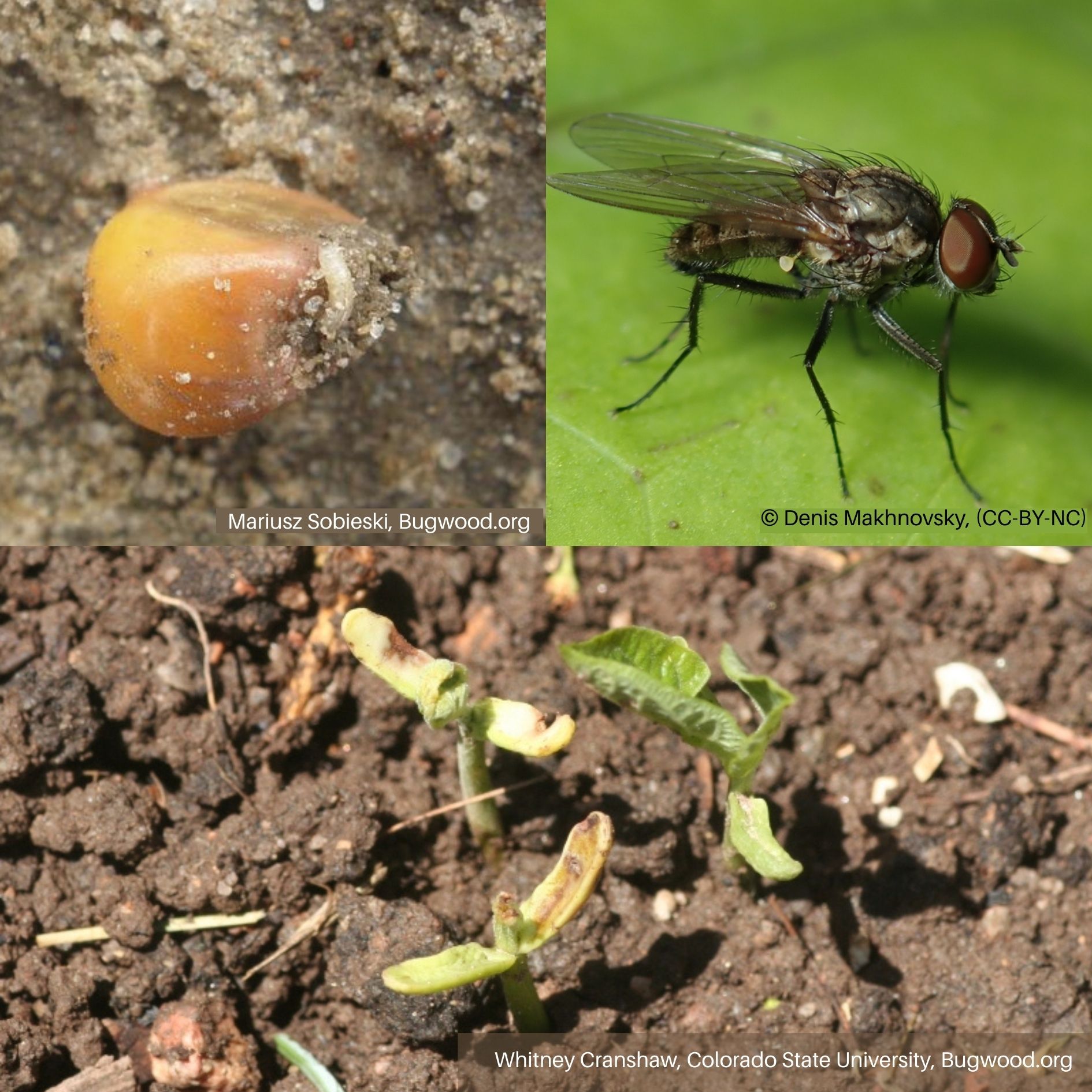Root Maggots
 Onion Maggot (Delia antiqua)
Onion Maggot (Delia antiqua)Larvae, Adult, and Damage
 Cabbage Maggot (Delia radicum) Larvae, Adult, and Damage
Cabbage Maggot (Delia radicum) Larvae, Adult, and Damage Seedcorn Maggot (Delia platura) Larvae, Adult, and Damage
Seedcorn Maggot (Delia platura) Larvae, Adult, and Damage Garden with Raised Beds
Garden with Raised BedsHOSTS
- Brassicas
- Corn
- Radish
- Broccoli
- Beet
- Turnip
- Onion
DESCRIPTION
Onion maggots (Delia antiqua) and cabbage maggots (Delia radicum) look very similar and are most easily distinguished by the crops they attack. Adult flies are slightly smaller and more slender than houseflies with longer legs and overlapped wings at rest. Eggs are oblong and white in color. Seedcorn maggot (Delia platura) adult flies are slender and grayish black in color. Eggs are oblong and white in color.
Other root maggots:
• Bean seed maggot (Delia florigela)
• Radish root maggot (Delia planipalpis)
• Sugar Beet root maggot (Tetanops myopaeformis)
BIOLOGY
Egg | Larvae | Pupa | Adult
Most root maggots tend to pupate overwinter in crop debris and soil. Adults emerge in early May, and mated females lay eggs in the soil at the base of host plants. Small maggots hatch in 4-10 days and immediately burrow into the stem of the host plant. After about 3 weeks, mature larvae leave the stems and pupate in the soil close to the soil surface. About 2 weeks later, adult flies emerge and lay eggs for another generation. Larvae from this generation feed on roots or stems and develop into the overwintering pupae.
SYMPTOMS
Root maggot larvae feed on the roots and tunnel into the seeds of vegetable crops. Tunnels provide an entry for decay, fungi, and bacteria. Damaged plants show wilting, reduced growth, and lighter green plant parts. Seedlings and young plants are most vulnerable while healthy plants can tolerate moderate infestations.
SCOUTING
- Monitor for signs of maggot damage, such chlorosis and reduced growth, in emerged plants.
- If maggot damage is suspected, pull up affected plants and check the roots and soil to confirm maggot presence.
GENERAL MANAGEMENT
- Rotate crops. Plant susceptible hosts as far away as possible from where they were planted the previous year.
- Use a set of drag chains when direct-seeding susceptible crops. Drag chains can help eliminate moisture where seeds have just been planted. Adult flies may be more attracted to moist areas for egg-laying.
- Be aware of cabbage maggots in cool, wet spring weather. These conditions are more favorable for cabbage maggot development.
- Plant seeds into raised soil beds to promote soil drying and warming, and discourage egg-laying by cabbage maggots.
- Immediately after harvest, destroy or disc under crop residues. Maggots are able to survive for an extended time in crop residues.
- When several rows of seedlings are infested, remove them and replant.
INSECTICIDES
Fumigate or treat infested soil before planting. In areas where maggots causes economic injury, treat with a band of insecticide at the base of the plant at the time of planting or transplanting.

